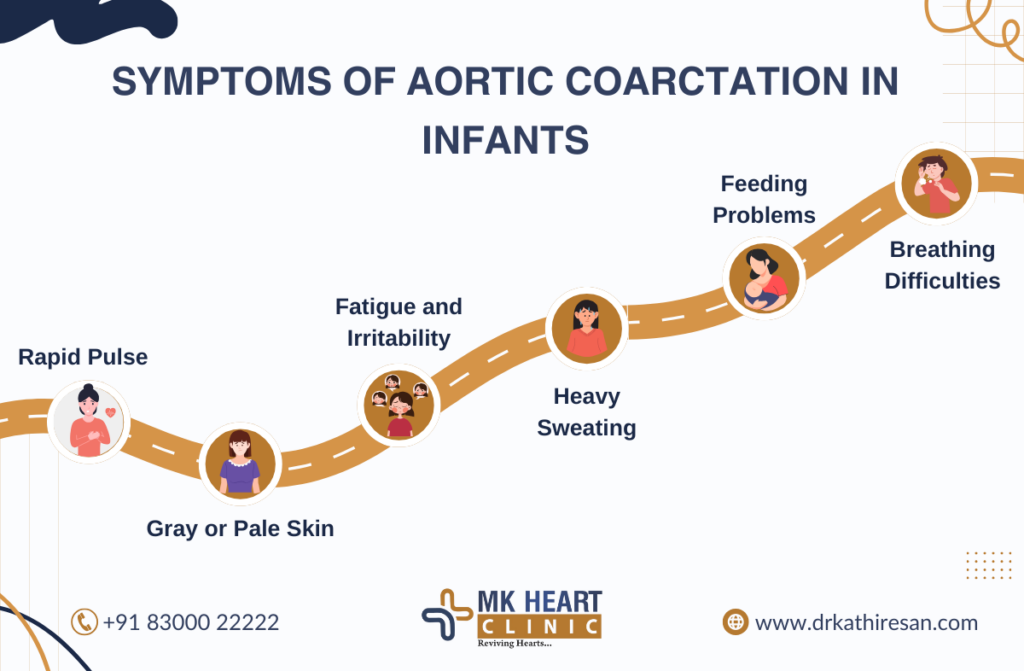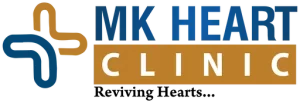Coarctation of the aorta symptoms is a condition that can go unnoticed for a while but can have serious consequences if not addressed early. Dr. Kathiresan, a specialist in cardiovascular conditions, explains that this congenital defect occurs when a part of the aorta is narrowed, leading to restricted blood flow. Recognizing these symptoms early is critical for preventing complications and improving outcomes.
What is Coarctation of the Aorta?
Coarctation of the aorta symptoms refers to a narrowing of the aorta, the main blood vessel that carries oxygenated blood from the heart to the rest of the body. This narrowing causes an increase in blood pressure above the narrowing and reduced blood flow below it. The condition is often congenital, meaning it is present at birth, and can affect people of all ages. While it might not cause obvious symptoms right away, it can lead to serious cardiovascular issues over time.
Recognizing Coarctation of aorta newborn symptoms early can help prevent more severe complications later in life. Can coarctation of the aorta be cured? While surgical intervention can effectively correct the condition, lifelong monitoring is often necessary to manage any long-term complications.

Symptoms of Aortic Coarctation in Infants
coarctation of the aorta symptoms may include
1. Rapid Pulse
A fast or strong pulse, especially in the upper body, indicates extra strain on the heart due to restricted blood flow.
2. Gray or Pale Skin
Poor oxygen circulation leads to a pale or grayish skin tone, signaling reduced oxygen delivery to the body.
3. Fatigue and Irritability
Babies may tire easily and seem unusually fussy, even with minimal effort, due to heart-related stress.
4. Heavy Sweating
Excessive sweating, particularly during feeding or minimal activity, is a common sign of heart distress.
5. Breathing Difficulties
Labored or rapid breathing suggests significant heart strain and compromised blood circulation.
6. Feeding Problems
Feeding difficulties and poor weight gain are major red flags associated with this heart condition.
How is Coarctation of the Aorta Diagnosed?
How to diagnose coarctation of aorta typically involves a combination of physical exams, imaging tests, and sometimes invasive procedures. Doctors first check for differences in blood pressure between the arms and legs, as this is one of the most telling signs of the condition. An echocardiogram is usually the next step, as it provides clear images of the heart and aorta. Identifying coarctation of the aorta symptoms early through these diagnostic tools can help doctors determine the most appropriate treatment and prevent further complications.
Additional tests might include:
- MRI or CT scans, which provide detailed images of the aorta.
- Chest X-rays, which can show signs of heart enlargement or other abnormalities.
- Cardiac catheterization, which may be used in more severe cases to confirm the diagnosis.
How is Coarctation of the Aorta Repaired?
Treatment for coarctation of the aorta depends on the severity of the condition. In many cases, surgery or less invasive procedures are required to fix the narrowed section of the aorta and restore normal blood flow. Identifying coarctation of the aorta symptoms early is crucial, as early repair can help prevent long-term health issues like heart failure, hypertension, and organ damage.
Surgical options include:
- End-to-end anastomosis, where the narrowed portion of the aorta is removed and the remaining healthy ends are reconnected.
- Patch aortoplasty, in which a patch is used to widen the constricted area, especially in cases where the narrowing is extensive.
Surgery to Repair Coarctation of the Aorta
Surgical correction of coarctation is typically very effective in restoring normal blood flow and reducing the risks of complications. Early recognition of coarctation of the aorta symptoms is vital for successful intervention. While surgery is often recommended for infants and children, adults may also require surgical repair, particularly if the condition was not diagnosed earlier in life.
Surgeons can often repair the aorta through minimally invasive techniques, which reduce recovery time and the risk of complications. Long-term follow-up care is important to ensure that the repair remains successful
Cardiac Catheterization to Repair Coarctation of the Aorta
Cardiac catheterization is a less invasive procedure that may be used to repair coarctation of the aorta, particularly in older children or adults. A catheter is inserted into the blood vessel, and a balloon is used to expand the narrowed area, restoring normal blood flow. Sometimes, a stent is placed to keep the aorta open.
This method is effective for certain cases of coarctation but may not be suitable for all patients. The decision to use cardiac catheterization depends on factors like the age of the patient and the severity of the narrowing.
Complications of Aortic Coarctation Repair
While most repairs are successful, complications can arise. These may include:
- Re-coarctation, or a recurrence of narrowing, which may require further treatment.
- Hypertension, as high blood pressure can persist even after the narrowing is corrected.
- Aneurysms, where the walls of the aorta may weaken, leading to the risk of rupture.
How to diagnose coarctation of aorta early can help detect potential complications before they worsen. It is essential for patients to have regular follow-ups to monitor for these potential complications and ensure that the repair remains intact.
Can Coarctation of the Aorta Be Cured?
Can coarctation of the aorta be cured? While surgical and catheter-based repairs are highly effective, coarctation of the aorta is typically not “cured” in the traditional sense. Patients often require lifelong monitoring to manage potential complications like hypertension or re-narrowing. However, with early detection and treatment, the outlook for most individuals is positive, and many lead healthy, normal lives.
Conclusion
Coarctation of the aorta symptoms are critical to identify early in order to prevent severe complications. If you or your child are experiencing any of the signs discussed in this post, it is essential to consult a specialist like Dr. Kathiresan to get a thorough evaluation and start treatment as soon as possible. For more information about coarctation of the aorta, diagnosis, or treatment options, feel free to reach out to us.

